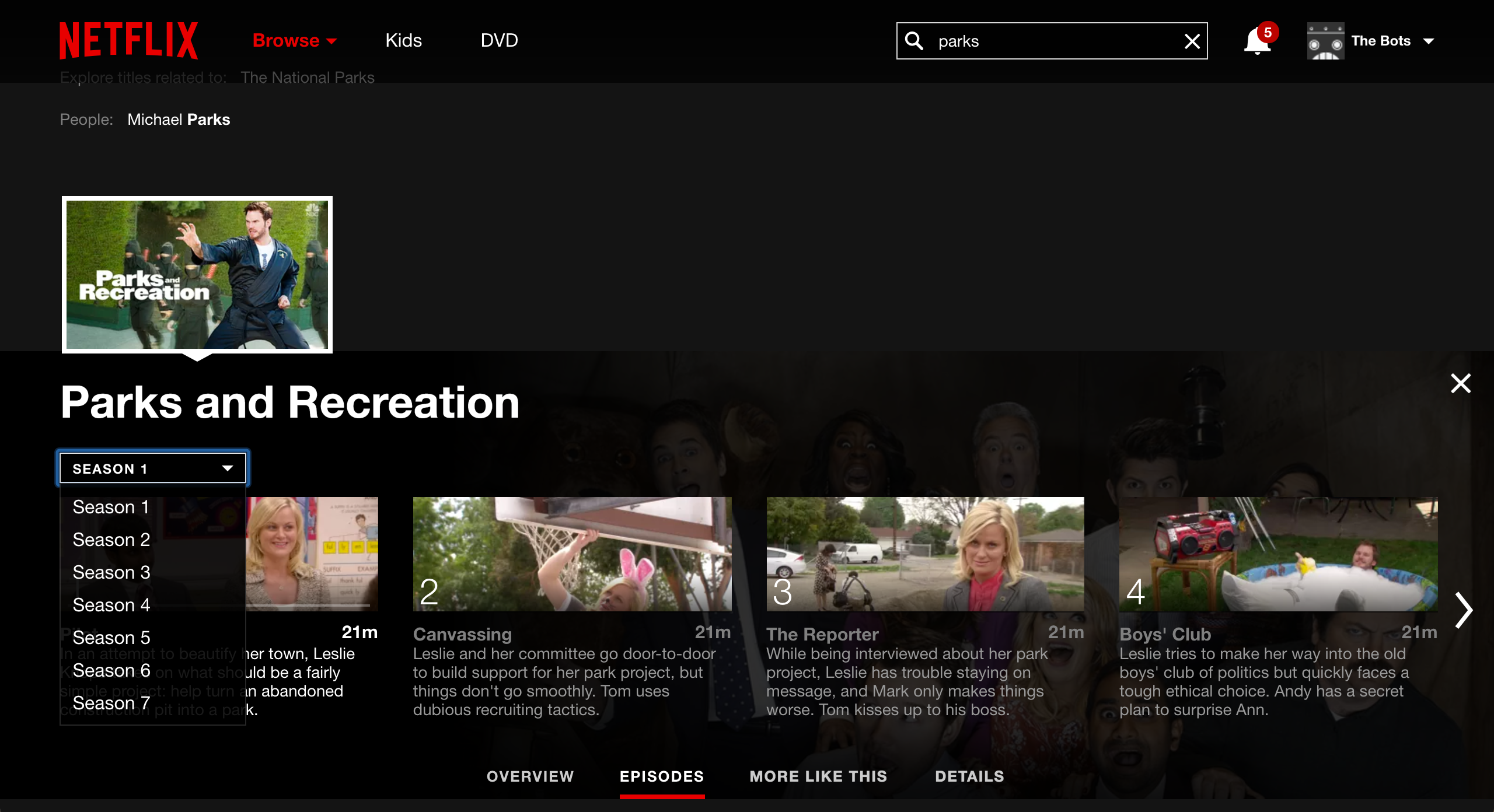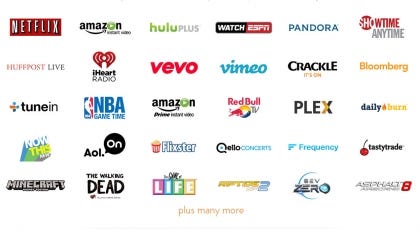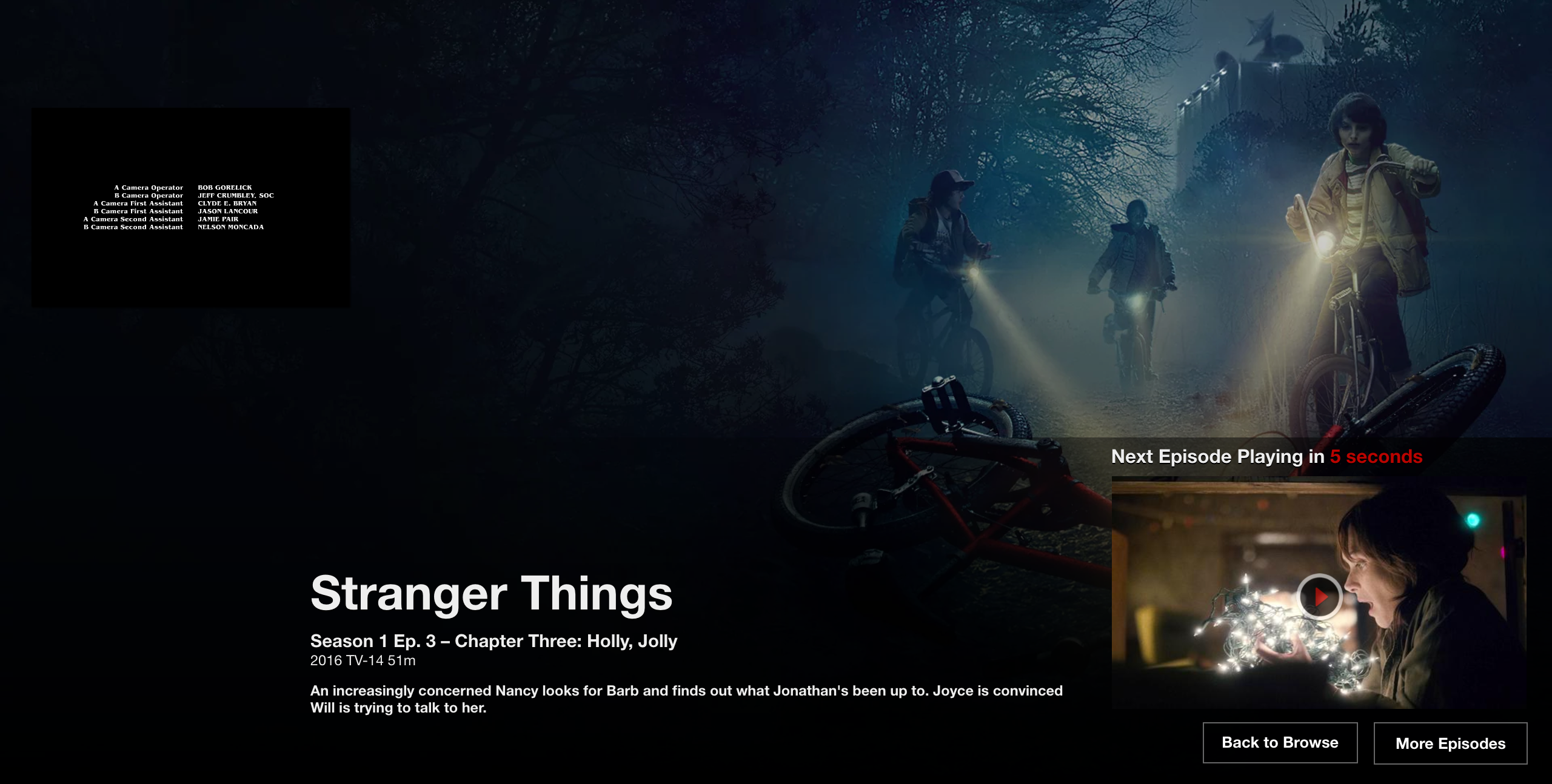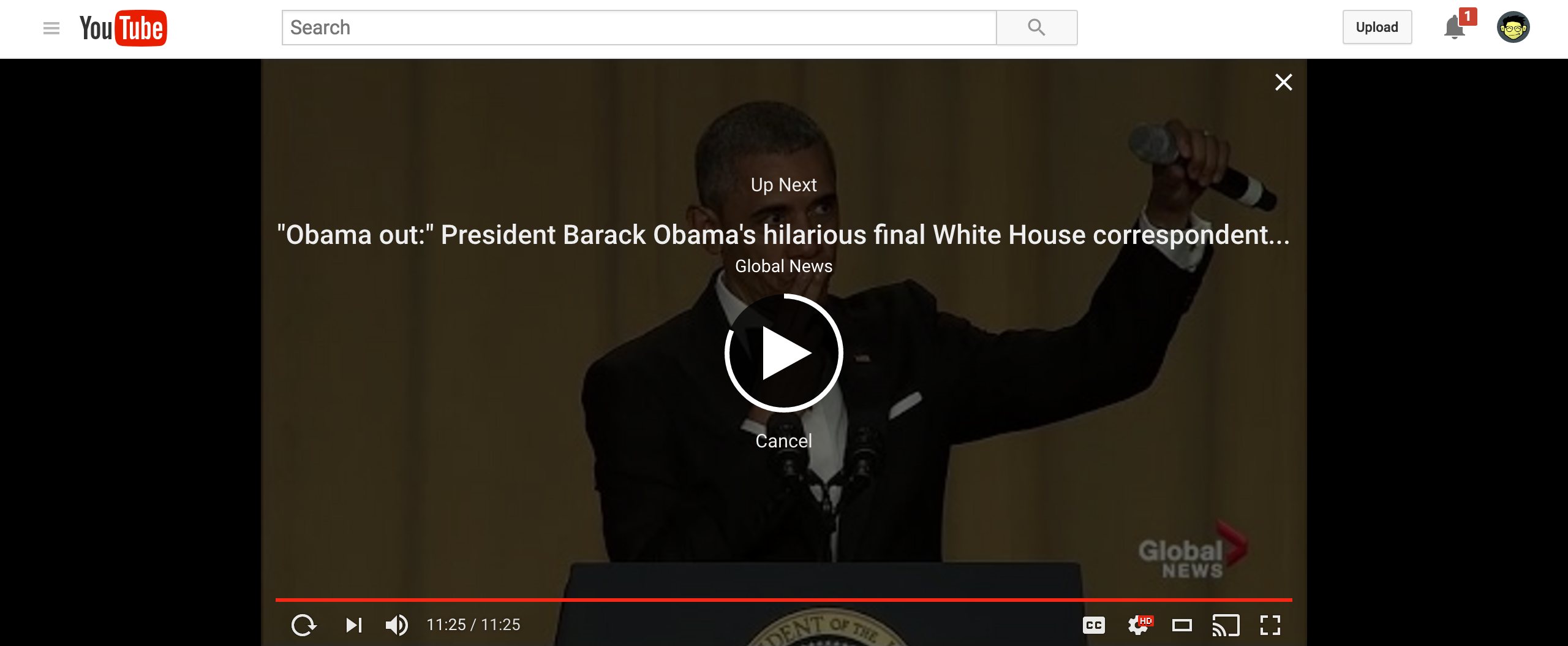 Give me all the episodes!
Give me all the episodes!2016-10-02
Just one more episode…
Have you ever caught yourself looking at the clock and realizing you’ve been watching Netflix the entire day?
This experience is the result of tweaks and optimizations over the years to craft a well-thought UX. To understand the decisions made, we first need to understand the goal of Netflix. They succeed when people watch. This is obvious from the “binge watching" movement they created by simply making entire seasons of shows we loved available at once. And that was good enough for a while.
 Give me all the episodes!
Give me all the episodes!
If we look at Netflix through the lens of Nir Eyal’s Hooked model, we can easily see the steps they want us to take.
Trigger: I’m bored.
Action: Open Netflix
Reward: Find something entertaining
Investment: Watch something
This hook is nothing revolutionary. Every video company in history has pretty much followed this model. The trick is getting someone to come back. How do you convince someone that opening your app is the best action to take when you’re bored? You have some stuff competition, after all.

And this doesn’t even include behemoths like Facebook, Twitter, and Snapchat (Source: Techradar)
The clear first step for Netflix was to show a prompt for the next episode. This was an external trigger to send someone back into the hook. But this still required a decision on whether you wanted to continue watching (i.e. investing) or not.
The simple, yet impactful, change they made was auto-play. By starting the next episode of a show while the credits roll, they completely removed the action—shortening their hook to a continuous reward and investment. Brilliant.
 The credits keep playing, but you preview the next episode with a countdown timer (enticing).
The credits keep playing, but you preview the next episode with a countdown timer (enticing).
Clearly, this is a common UX among video companies now…

And for good reason. The smaller you can make your product’s hook, the less involved people need to be to complete the hook, the easier it is to develop a habit.
With that part of the hook optimized, Netflix has looked elsewhere to see where else it can nurture the hook. I don’t have data, but from personal experience I bet a lot of people fall off at the “find something interesting” stage simply due to decision paralysis. So now they’re experimenting with auto-playing trailers as you browse to *give you *something interesting to add to your list. I wouldn’t be surprised if they start putting recommendations directly in “My List” or sending notifications to go through it.
As with any good product, Netflix deeply understands its customers and what job they are being hired to fulfill. They understand the behavioral hook triggered by boredom and how to optimize it. The product lesson here is that optimization can often be removing steps entirely, not only making them easier.
So the next time you’re optimizing a flow, don’t just ask yourself how you can make decisions easier. Ask yourself how you can remove the decision entirely.
Disclaimer: As Nir Eyal always says, using these kind of techniques is manipulative. And it’s a fine line between changing habits and fostering addiction. Don’t be evil.